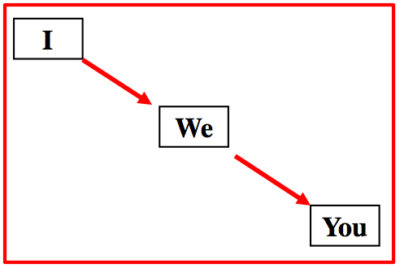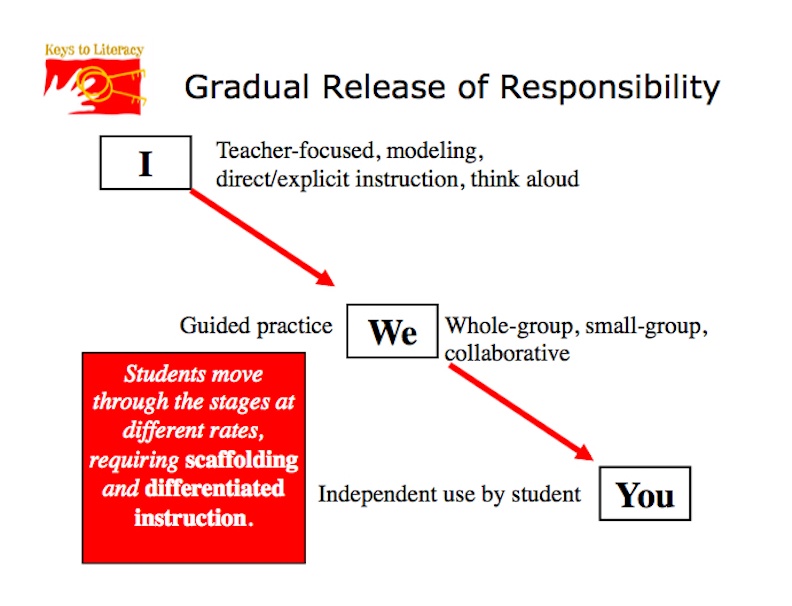Differentiated Literacy Instruction: I, We, You

The Reading Rockets website has a short, introductory article titled “Differentiated Instruction for Reading” that includes this description of differentiated instruction:
“Differentiated instruction is a process through which teachers enhance learning by matching student characteristics to instruction and assessment. Differentiated instruction allows all students to access the same classroom curriculum by providing entry points, learning tasks, and outcomes that are tailored to students’ needs. Differentiated instruction is not a single strategy, but rather an approach to instruction that incorporates a variety of strategies. Teachers can differentiate content, process, and/or product for students.”
An important component of differentiated instruction is the use of scaffolds (provided to all or some students) that are gradually released as students become more proficient with reading and writing skills. Differentiated instruction and the use of scaffolds are elements in a teaching model that is embedded in all Keys to Literacy professional development. We call this an “I, WE, YOU” model of instruction, which is often associated with a “Gradual Release of Responsibility” model (Pearson & Gallagher, 1983).
Anyone who has participated in Keys to Literacy professional development will recognize the visual below – it is embedded in most of our training books and PowerPoint training slides.

The teacher is the centerpiece of the “I” stage, which includes explicit instruction of a literacy skill with modeling through think aloud. The “We” stage entails individual, small-group, or whole group practice with a literacy skill. This practice should be guided by the teacher and should include corrective feedback. Eventually, each student reaches the “You” stage, when he or she applies the literacy skill independently. It is important to keep in mind that the amount of time, guided practice, and scaffolding required to reach independence with a skill varies from student to student. Differentiating instruction allows teachers to meet the individual needs of students as they move through the I, We, and You stages of the learning process.
You may find a few other graphic organizers related to I, We, You helpful. The first example below is from Reggie Routman (2015). The second is from Fisher and Frey (2013).


References:
Pearson, P. D. & Gallagher, M.C. (1983). The Instruction of Reading Comprehension, Contemporary Educational Psychology, 8, 1983, pp. 317-344.
Routman, R. (2015). A Good Learning Model for New Teachers. Middleweb blog post.
Fisher, D. & Frey, N. (2013). Gradual Release of Responsibility Instructional Framework. International Reading Association.

 Joan Sedita is the founder of Keys to Literacy and author of the Keys to Literacy professional development programs. She is an experienced educator, nationally recognized speaker and teacher trainer. She has worked for over 35 years in the literacy education field and has presented to thousands of teachers and related professionals at schools, colleges, clinics, and professional conferences.
Joan Sedita is the founder of Keys to Literacy and author of the Keys to Literacy professional development programs. She is an experienced educator, nationally recognized speaker and teacher trainer. She has worked for over 35 years in the literacy education field and has presented to thousands of teachers and related professionals at schools, colleges, clinics, and professional conferences.
Great Article! Thank you for sharing this is a very informative post, and looking forward to the latest one.